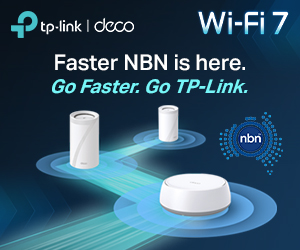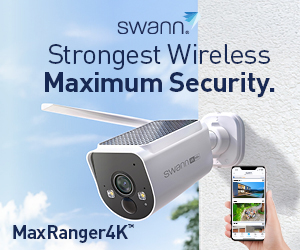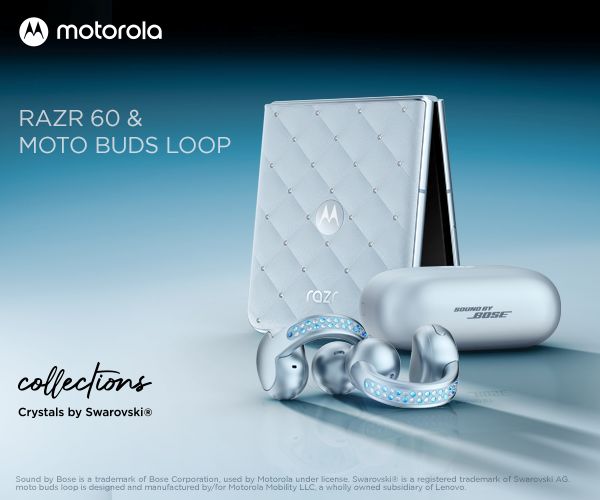The LG G4 evo OLED takes OLED TV to a new high with fantastic brightness, true natural OLED colours and inky blacks – it is simply the best OLED experience you can aspire to.
We have just spent the last few weeks with the LG C4 evo OLED and the premium LG G4 evo OLED. The G4 is not so much better than the C4, but it offers a higher 1400 nit peak brightness (which we had to tone down), a faster processor, superb MLA+ (Micro Lens Array Plus), and VantaBlack panel technology that almost eliminates reflections.

The most significant upgrade in the 2024 G4 compared to the 2023 G3 is the A11 processor versus the A9 Gen 6. According to LG, this powerhouse delivers a 400% AI performance boost, a 170% graphics performance improvement, and a 130% general processing improvement. These enhancements allow the TV to handle process real-time images (up to 144 frames per second) with unprecedented speed and accuracy.
LG G4 comes with upgraded AI upscaling utilising precise pixel-level image analysis to sharpen objects and backgrounds that may appear blurry. It also refines colours by analysing frequently used shades that best convey the mood and emotional elements intended by filmmakers and content creators. Dynamic Tone Mapping Pro fine-tunes brightness and contrast by analysing variations in brightness where light enters the scene, creating more three-dimensional images.
Our verdict is crystal clear
If you aim for a balance of quality and affordability, the C4 is a solid choice, delivering a superb viewing experience. However, if you are not constrained by budget and your TV viewing area has higher ambient light levels, the G4 is the undisputed champion. This TV is a near-perfect 10/10.

We won’t repeat much of the information in the LG C4 Evo OLED – the Goldilocks OLED TV – just right —so we suggest you read that first.
Australian Review – LG G4 evo OLED 2024 Model OLED 65G4PSA
Note: All specifications refer to the 65” model.
| Website | Product Page Manual User Guide Online Manual (WebOS 24) We avoid repeating too much of the 163-page user guide. |
| RRP | 55/65/77/83” RRP $4199/5299/7999/9999. As these have just been launched, look for soundbar bundles. Discounts will be much later in the year. |
| From | LG Online, Harvey Norman, Domayne, JB Hi-Fi, Good Guys, Bing Lee, Appliances Online and many quality CE retailers |
| Warranty | 1-year ACL confers consumer rights against major defects for an extended period. |
| Made in | Indonesia |
| LG | LG (formerly Lucky-Goldstar from 1983 to 1995) is a South Korean multinational conglomerate that manufactures electronics, chemicals, and telecommunications products. |
| More | CyberShack LG News and reviews CyberShack AV news and reviews |
We use Fail (below expectations), Pass (meets expectations) and Exceed (surpasses expectations or is the class leader) against many of the items below. We occasionally give a Pass(able) rating that is not as good as it should be and a Pass ‘+’ rating to show it is good but does not quite make it to Exceed. You can click on most images for an enlargement.
We are also tightening up on grading. From now on, Pass, for example, means meeting expectations for the price bracket. We consider a Pass mark to be 70+/100, with extra points added for class-leading and excellence. For 2023 reviews and earlier, deduct 10 points from them for reasonable parity.
First Impression – Exceed
We wrote of the 2023 LG G3 ‘It is the kind of TV that reviewers hope LG forgets to collect. Why? Because once spoiled by near perfection, it is hard to go back to a lesser TV’.
Now, the G4 is even better—in some significant areas. This is not an incremental upgrade but a quantum leap that has put it well and truly at the top of the TV heap. We wonder when LG will run out of ideas for improving its TVs.
While it looks like the G3, almost everything has been upgraded. The most significant are the α11 AI Processor 4K, MLA+ evo OLED and the Vanta Black screen treatment. It also has 4 x HDMI 2.1 ports, the Re:New four OS upgrade policy, and a 5-year panel replacement warranty (parts only).
The G-series (Gallery) was always meant to be wall-mounted, and the 75 and 83” models have a slimline wall mount.
The 65” is 1441 x 826 x 24.3mm x 23.8kg (no stand) and 1441 x 865/910 x 263mm x 29.1kg (with dual-height stand). It uses a 300 x 300 VESA mount; all models are under the plasterboard and timber stud walls at a maximum weight of 60 kg.
It comes with the usual non-backlit Bluetooth Magic Remote MR24, replete with an on-screen cursor. LG has resisted the trend of eliminating numeric buttons, which make free-to-air navigation much easier than wrestling with an EPG to find your channel.
New for 2024 – LG Re:New webOS program – Exceed
You get four webOS upgrades over five years (five versions, including webOS 24), which is class-leading. LG will also provide any necessary security patches as this is part of your home network.
LG webOS – the good and not-so-good
LG webOS is an excellent, easy-to-use TV operating system. The LG app store has over 2000 apps (Game 458, Entertainment 1305, Life 229, Education 56 and News/Info 73). It has all Australian digital TV apps and streaming services. It appears to have more variety than Samsung, but the real winner is Google TV, which has thousands more.
The Not-so-good is that LG is moving to a ‘Smart Life Solution Company’. Instead of just selling you a smart TV, it has become a platform-based service business model that continuously generates profits from your viewing data—a.k.a. advertisements!
To use the TV’s essential smart functions, you must agree to sign in to an LG Account and its Terms of Use and Privacy Policy. If you want to use more smart services, you must agree to a viewing information agreement, a voice information agreement, an Interest-based cross-device advertising agreement, and an LG Channels agreement appended at the end of this review.
LG allows you to reset the advertising ID, limit advertisement tracking, and delete viewing and voice information. However, that is a little late, as your data has already been collected.
Privacy Bottom Line
When you buy a TV, you are not thinking about the 43-page and nearly 20,000-word agreement to use the device fully. To be fair, Samsung has eight nested policies and over 35,000 words, so both companies are hoovering up your viewing data.
I have read all 20,000 words (copies at the end of the review), and while I object to any TV/Brand knowing so much about my viewing habits and serving me advertisements, LG’s policies do not contain anything evil, and the Privacy and Terms of Use are benign.
PS – this is in addition to any streaming app privacy policies.
LG G4 evo OLED 2024 OLED65C4PSA base specs (65”)
- 55/65/75/83”
- α11 AI Processor 4K 4 core (Adds significant AI features – see AI later).
- Evo OLED MLA+ HDR10 panel (Dolby Vision decode)
- Vanta Black surface treatment absorbs up to 99.965% of the incident light.
- 100Hz native refresh (AU 50Hz power)
- Genuine 10-bit/1.07 billion colours
- Claim 100% DCI-P3
- Native Contrast: Infinite
- Delta E out of the box: <1 – excellent. It can be calibrated for a very slight improvement.
- WebOS 24 – four webOS upgrades over five years
- LG Channels 300+ free ad-supported channels
- 4 x HDMI 2.1 4K@100/120Hz (eARC port 3), VRR/ALLM/HGIG/FreeSync/G-Sync
- Ethernet 10/100
- 3 x USB-A 2.0 5V/.5A/2.5W for flash drives and USB Camera compatible
- Optical Out
- Wi-Fi 6, BT 5.2 Tx/Rx (SBC/AAC/aptX) and supports AirPlay 2 and Chromecast
- 300 x 300 VESA wall mount.
- 60W 4.2 channel (6 x 10W speakers all down-firing and Virtual 11.1.2 Up-mix)
- Energy Star: 4
MLA+ (Micro Lense Array Plus) – Exceed
This version 2 of MLA uses a technology called Meta 2.0 (unrelated to Facebook Meta). LG’s explanation is here.
Billions of microlenses (77” has 42.4B or 5117 microlenses per pixel) are layered on the OLED pixels. Coupled with the A11 processor, it is mainly responsible for the 1400 nits’ peak brightness (and we measured over 2000 in some scenes).
It does not create brightness so much as focus the light each pixel produces, resulting in less light escape and, therefore, less energy use and less heat.
Vanta Black – Exceed
Vertically Aligned Nano Tube Array Black is the blackest substance known on Earth – it is also expensive! The G4 uses this as a screen coating to absorb up to 99.965% of the incident (reflected light). It does a magnificent job.
AI – A strong point – Pass+
LG has particular expertise in AI, which results in excellent ‘automatic settings’.
- AI Brightness (changes brightness to match ambient light)
- AI Recommendation/Concierge (content recommendations based on what you watch)
- AI Genre Selection (changes settings to the type of content)
- AI Picture Pro (automatically selects the best resolution, brightness, etc)
- AI Super Upscaling 4K
- Advanced Local Dimming (Dimming Pro)
- AI Sound Pro (optimal balance between sound effects and clear voice. It will faux-upscale 2.0 content to 9.1.2, but the speakers cannot handle that.
- AI Acoustic Tuning (Standard, Bass Boost and Treble Boost) in your viewing space setup.
- AI Game sound (for gameplay)
Picture presets- Pass+
AI Picture Pro mode has a new ‘object enhancement by visual perception’ feature to better define more objects on-screen. AI Director Processing also analyses the picture to determine the director’s intent and enhances colours accordingly.
It has a Personalised Picture Wizard that can identify your preferences. This is in addition to SDR formats of Vivid, Standard, Eco, Cinema, Sports, Game, Filmmaker, (ISF)Expert (Bright Room), and (ISF)Expert (Dark Room). The HDR/Dolby Vision setting is automatic when it encounters a signal it can decode.
All these settings give you broad control over what you see. We found Vivid was too bright. Standard was best for Free-to-Air TV/digital streaming and Cinema for most movies in a well-controlled ambient light room.
Interestingly, it is not the brightness that makes the G4 look best. Filmmaker Mode now has a Dolby Vision version that brings life, detail, and depth to super-dark scenes.
You may not be able to see the differences between the settings below as you will likely view this on an 8-bit phone screen or desktop monitor. Look for details in the hair, green eye shadow, red lips and jewels. Also, look at the black background for subtle tone differences. The G4 can make anything look good.




Brightness – Exceed
We know that the MLA+ increases brightness by reducing light loss. But the other key is proper dimming. Where mini-LED uses zones (sometimes thousands), evo OLED uses 8.3 million pixels (all tiny lightbulbs). The a11 AI processor looks at each pixel within the whole image context. This means a higher average brightness without burning out the bright highlight detail.
Contrast
Infinite as only OLED can.



Brightness – Exceed
- HDR peak 1450/235
- HDR sustained 1400/225
- SDR peak 625/325
- SDR sustained 615/320
In fact, we measured over a 2000 nits HDR peak in some scenes, which is well above what Dolby Vision needs.



DCI-P3
99% – perfect.
Delta E <1 – calibration would only yield a minor improvement.




Gradient
Perfect

Upscale – Exceed
LG’s A11 AI Processor 4K and its years of machine learning and AI development have paid off. We upscaled old Thunderbirds 480 content to 4K with the barest hint of softness, mainly in the background.





Text – Exceed
You can easily read down to 14 points. PC text is slightly fuzzy as Microsoft ClearType does not recognise the WOLED WRGB and MLA+ design.


Uniformity – Exceed
All full-screen colours and greyscale are 100% uniform, with no bright or dark spots.
Viewing angle – Exceed
The MLA+ lens gives this even better wide viewing angles than the G3. You can sit at nearly 180° (right angles) and still see a clear and colourful image, although 160° off-angle is the practical seating limit. This means you can use a couch and side chairs; everyone gets a great image.
Reflectivity – Vanta Black AR coating – Exceed
There is almost no reflectivity.


PWM – Exceed
It has no pulse width modulation flicker, which is suitable for PWM-sensitive people.
Motion – Exceed
TrueMotion settings can insert Black Frames and/or AI content frames to smooth out fast-moving scenes.
Ironically, we noticed some minor stutter at 24fps movies that can be improved by turning motion processing off.
Gamers (not tested)
The LG G4 evo OLED has <2ms response time – perfect for gamers.
A Surface Pro 9 connected with 10-bit/1.07 million HDR colours at HBM 3, 4K@100Hz. It would not connect at 120Hz. It also connected at 4:4:4 in Dolby Vision mode. Remember that AU power is 50Hz, so you get a 100Hz panel refresh. 120Hz is for 60Hz.
We did not test with a PC with a suitable iGPU. Similarly, you would get 120Hz instead of 144Hz.
Gaming features are comprehensive and include:
- NVIDIA GeForce Now cloud gaming.
- 21:9 (60Hz) or 32:9
- 3840 x 1600/1080 or 2560 x 1080.
- Dynamic Tone Mapping for HDR
- Game Sharpness
- Colour depth
- Black levels
Power – Pass+
Energy Star rating 4
- SDR <100W
- HDR 200-240W
Sound
The TV decodes PCM, Dolby Digital, DTS, DTS:X and Dolby Atmos (DA) metadata and downmixes to its 4.2 speakers. The soundstage with non-spatial sound is as wide and high as the TV. DA and DTS:X add a little spatial height (within the screen area) and widen the soundstage past the screen.
It has seven sound modes – AI Sound Pro, Standard, Cinema, Clear Voice Pro, Cricket (Sports), Music, and Game Optimiser but most will select AI Sound Pro.
It has 60W 4.2 down-firing speakers—left and right front firing, left and right up-firing, and two ‘sub’ woofers—in the control box. The sound does a reasonable job of voice-tracking when used on a desktop and should be fine when wall-mounted.
The maximum volume is 80dB, with noticeable distortion and frequency clipping. Sound quality is best described as hollow and tinny. Overall, back off to 75% volume, it becomes acceptable for clear voice and free-to-air TV.
It has no low bass (20-50Hz); mid-bass starts from 60Hz, growing slowly to high bass at 200Hz. This is enough to hear some bass but not to feel it. The frequency graph below (gold line) is pretty choppy, meaning it clips the frequencies and lowers the dynamic range. The treble is choppy and lacks the ‘airy feel as if you were there’.
Sound summary
| Frequency | LG G4 evo OLED |
| Deep Bass 20-40Hz | Nil |
| Middle Bass 40-100Hz | Starts at 60Hz and builds slowly to 100Hz, then flat |
| High Bass 100-200Hz | Flat but choppy |
| Low Mid 200-400Hz | Flat but choppy |
| Mid 400-1kHz | Flat but choppy |
| High Mid 1-2kHz | Flat |
| Low Treble 2-4kHz | Flat |
| Mid Treble 4-6kHz | Flat |
| High Treble 6-10kHz | Dip to avoid harshness, then reasonably flat to 20kHz. |
| Dog Whistle 10-20kHz | Reasonably Flat |
| Volume | 80dB |
| Sound Signature type | It has a Bright Vocal sound signature (bass recessed, mid/treble boosted) for vocal tracks and string instruments but can make them harsh. Being flat from high bass allows presets and an EQ to recess frequencies (you can’t add to a native signature) to focus on clear voice dialogue, night listening, music and more. |
| Soundstage stereo | It is not much wider than the TV. |
| Soundstage Dolby Atmos/DTS:X | It decodes Dolby Atmos and DTS:X metadata to downmix to the 4.2 speakers. It can virtualise 11.1.2, but there is no real 3D spatial effect. To get any sense of DA sound, you need adjacent side walls to bounce the side-firing Left/Right speakers off (called psychoacoustics) and sit within 3 metres of the screen. |
| Comment | Adequate for FTA TV and digital streaming. Not for movies or music. |
| BT (headphones) | BT SBC or AAC codec is typical and crushes the mid-bass and high treble. There is decent Left/Right separation. |
| Read | How to tell if you have good music (sound signature is the key – guide). |
Our advice – use the LG S95TR 9.1.5 Dolby Atmos 810W soundbar – a real spatial experience
CyberShack – The LG G4 evo OLED just keeps getting better. It is the 2024 10/10 pick.
I have been reviewing TVs for over a decade. They get better and better each year, ad infinitum.
Generally, you would give Sony’s OLED the top gong because of its movie production chops and it nailed picture processing. I seriously fell in love with the 2023 Sony XR-A95L QD-OLED – the undisputed OLED class leader at a price (that uses a Samsung QD-OLED panel). It was my 2023 10/10 TV, and I very nearly bought one.
I did not buy it because I knew Sony’s 2024 Bravia 9 flagship would be a mini-LED. I questioned whether Sony was jumping from the QD-OLED ship and if there were any issues moving forward. Why? No major retailer is selling that model now.
So, when I tested the LG G4 evo OLED, I went back to the Sony tests, and, well, LG has regained the lead (at least over the A95L). Out of the box, it has better calibration (De <1), more peak brightness, MLA+, picture processing, HDR detail, and a big jump in AI.
It is the 10/10 TV for 2024.
Competition
LG will have an M4 (it should also come in 65/75/83” with MLA+ and 97” without) with a wireless connect box that shares the G4 specs and processor. It is not so much a competitor as it offers some more flexibility than a wall-mounted TV with all cables running to that. Expect to pay megabucks.
Samsung does not support Dolby Vision on any of its devices, so it is out of the running.
Sony’s Bravia 8 OLED (not tested) is more of an LG C4 competitor.
So, no – there is none.
But for those who must have the best, I advise waiting a few months, as LG typically runs Black Friday and other promotions that offer as much as a 30% discount on its premium TVs.
Why buy the LG G4 evo OLED?
Our sage advice is to buy the TV you can afford. That cuts a lot of readers out of the G4. But if you have the budget, here are some outstanding things.
- The best HDR details in dark and bright scenes, bar none.
- Remarkable colour uniformity and natural colours.
- The infinite contrast of OLED’s individually switchable self-emissive pixels allows you to see true black and white. (Black is not grey!)
- The Vanta Black screen treatment is amazing
- 1400 nits’ peak brightness (and we measured 2000+ in some scenes) is superb. OLED brightness is precisely controlled, whereas mini-LED uses a wasteful ‘big stick approach’.
- G4 colour calibration out-of-the-box is well below 1 (4 is acceptable). Mini-LED tends to be more like 3.
- Mini-LED calibration is difficult. Brightness is the enemy of colour and contrast. To achieve a reasonable balance, you need to reduce brightness, sometimes as much as 50%, defeating why you bought a mini-LED in the first place.
- Game Mode is fully compatible with Xbox, and Sony PlayStation advanced 4K Dolby/Atmos games.
- No Pulse Width Modulation (PWM Flicker Free) versus high PWM on LED/LCD.
- No off-angle colour shift
- No blooming (I hate blooming!)
If there was one issue, it is that LG webOS is now more of a data gatherer. However, the Re:New OS upgrade policy is a game changer.
Ratings – LG G4 evo OLED
- Features: 90 is the premium evo OLED. LG webOS is fully featured (you will never use them all), and its AI is arguably the best of any brand.
- Value: 85 – There is no real competition at this tech level.
- Performance: 90 – it meets or exceeds all performance tests for a premium TV. Sound is good rather than brilliant; you need a soundbar to appreciate Dolby Atmos and surround sound.
- Ease of Use: 85 – Setup is easy, and the menu system has considerable help prompts. LG WebOS 24 is easy to use with all major streaming Apps and now has a RE:New policy. Its warranty is 12 months, and Australian Consumer Law should protect you for a few years. However, the 20K-word terms and conditions are a real stretch when Google TV is about 4000.
- Design: 80—It is well made. Including the pedestal stand, or wall mount adds considerable amenity and value.
CyberShack Verdict
LG G4 evo OLED
55/65/77/83” RRP $4199/5299/7999/9999. As these have just been launched, look for soundbar bundles. Discounts will be much later in the year.















6 comments
Ian Glass
Thinking of getting a 65″LG G5. Is this still one of your top picks in the space? And what (relatively simple) soundbar would you recommend to go with it?
Ray Shaw
Hi Ian
The G5 is one of the best OLEDs, but I am having conscience issues recommending LG (or Samsung) in 2025 because of the masses of personal data they collect via the TV and monetise. The Sony Bravia 8 (or the new 8 II) are better and uses the Google TV operating system, which is vastly less intrusive, but remember to disable SAMBA (Sony’s data harvester). These are quite expensive. My advice is to look at the TCL C8K – it’s a superb mini-LED that gives almost OLED quality and costs a lot less. As for soundbars, it depends on whether you want true Dolby Atmos (dedicated rear and upfiring speakers). JBL Bar 1000MK2 7.1.4 or JBL BAR 1300 MK2 11.1.4 are the current best bars under $2000. If you want 7.1 the JBL Bar 800 MK2 is also excellent. https://www.jbl.com.au/home-audio/soundbars/
Chris Uren
I definitely will get the lg g4 83 inch on black friday since it has mla and all the gaming prospects i need and all the movie gatherings i need for the best tv I can get
Ray Shaw
Great choice!
Desmond AICKEN
Why don’t or not make these newer models 2024.! Versions LG Smart TV’S in Smaller Sizes ect as in 42in or 48in as too Fit & look better in A,! ? Smaller Setting Room,,! ??..
Ray Shaw
The C4 comes in 42 and 48″ and is very popular for that reason. You are not sacrificing much to use this model.https://cybershack.com.au/reviews/lg-c4-evo-oled-the-goldilocks-oled-tv-just-right-av-review/